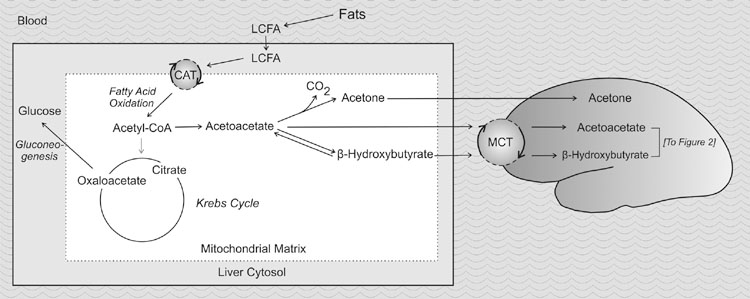Figure 1.
Alterations in intermediary metabolism during the high-fat, low-carbohydrate ketogenic diet that lead to the formation of ketone bodies. The ketogenic diet provides high levels of long chain fatty acids and is deficient in carbohydrates so that glucose availability is severely limited. The demand to maintain serum glucose causes oxaloacetate to be shunted from the Krebs cycle to the pathway for gluconeogenesis, a multistep process that is the reverse of glycolysis. As a result of diminished oxaloacetate, the Krebs cycle has reduced capacity to handle the high levels of acetyl-CoA generated from fat. Instead, acetyl-CoA is converted to the ketone body acetoacetate which spontaneously degrades to acetone. Acetoacetate also is converted enzymatically to β-hydroxybutyrate in a reversible reaction catalyzed by the NADH-dependent mitochondrial enzyme β-hydroxybutyrate dehydrogenase. Ketone bodies represent alternative energy substrates for the brain. Not all Krebs cycle intermediates are shown in the schematic. Abbreviations: CAT, carnitine-acylcarnitine translocase; LCFA, long chain fatty acids; MCT, monocarboxylic acid transporter.

